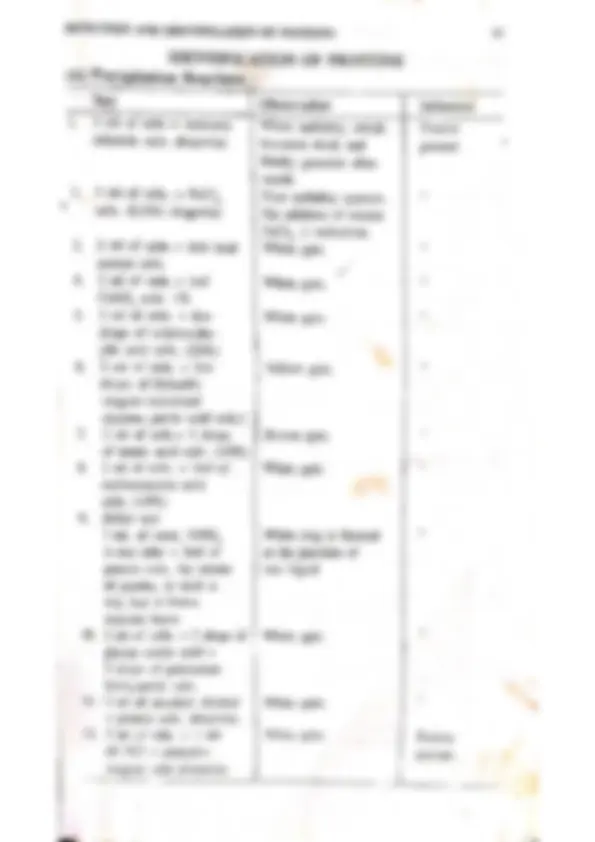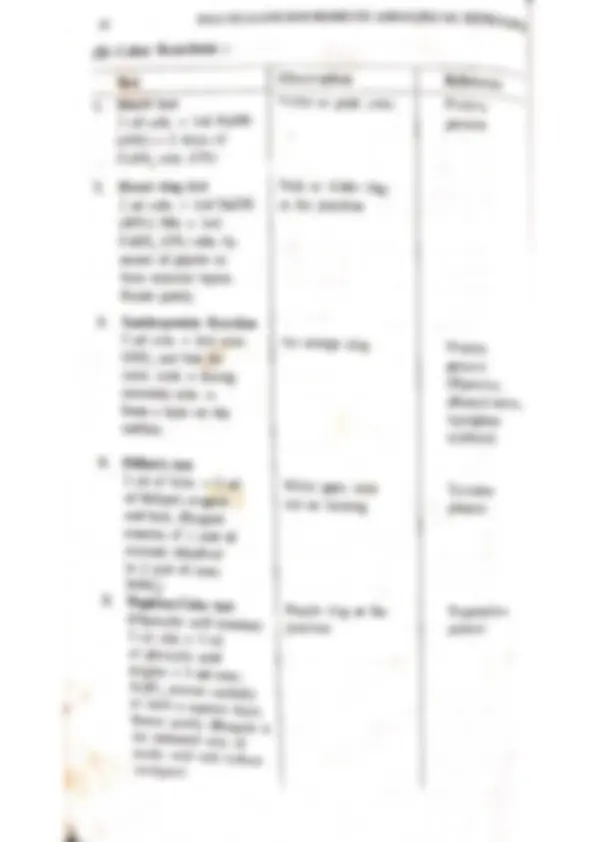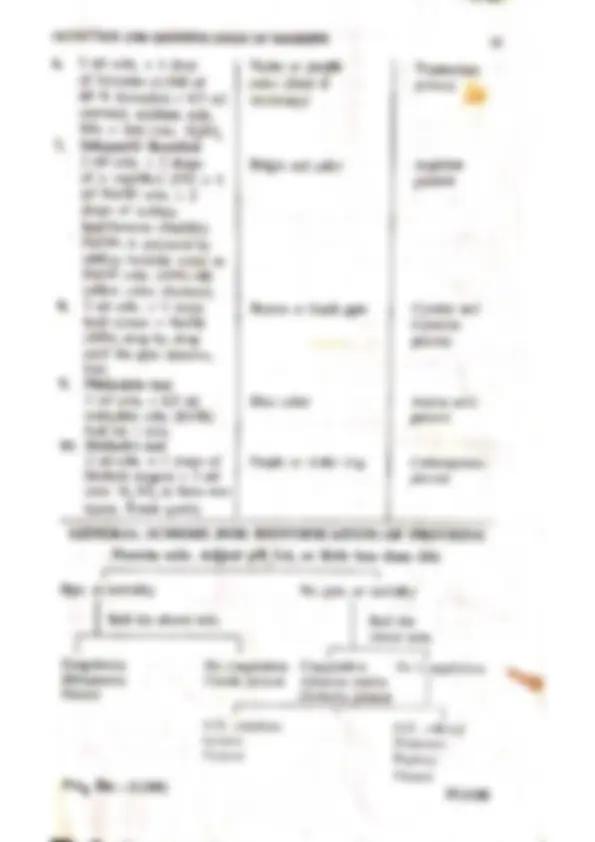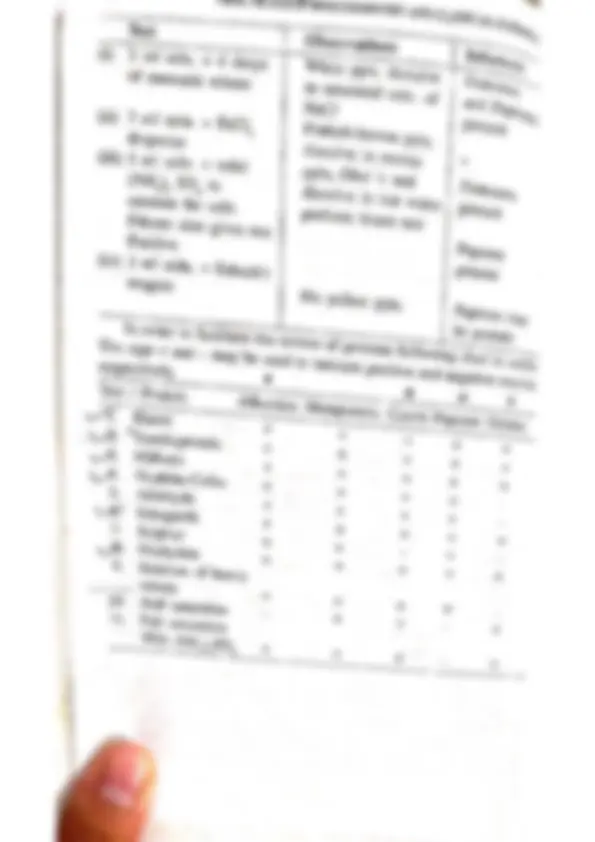Partial preview of the text
Download Information@#$& about, university ,of gujarat, technological, (University;:,) and more Summaries Pharmacy in PDF only on Docsity!
2 DETECTION AND IDENTIFICATION OF PROTEINS a ir core ormeneme — — mt Proteins are the essential constituents of protoplasm. They differ from carbohydrates and lipids in that they contuln nitrogen and hence cannot be replaced in dict by any other constituent. The molecules made up of a large number of amino acids are joined together by peptide linkages (CO-NH) B O O Il | II H)N a an s N- CHR,-C- OH OH H Ou i | i — HN - CHR - C-~N-CHR,-C-OH +H,0 Classification : A. Simple proteins e.g. albumins, globulins, glutelins, protamine, albuminoids, histones, protamines. B. Conjugated proteins : (1) Nucleoproteins e.g. nuclein, nucleihistonc. (2) Chromoproteins e.g. hemoglobin, flavoprotein, cytochrome, thodopsin, hemocyanin ete. (3) Phosphoproteins e.g. casein, egg yolk. (4) Glycoproteins e.g. mucin, mucoids. (5) Lipoproteins. (6) Metalloproteins e.g. ceruloplasmin, siderophilin. C. Derived proteins e.g. peptones, peptides, polypeptides, aminoacids, etc. The peptide linkages may be hydrolysed by vigorous treatment with acid or alkali. There are 30 aminoacids found in plant and animal kingdom, out of which 18 form the part of proteins. Except glycine all aminoacids are optically active and have a I- configuration. Aminoacids are present in different proportions in different, proteins. This is responsible for their wide variation in chemical and physical properties, and also their nutritional value. REACTIONS OF PROTEINS A. Precipitation Reactions : Solubility of proteins depends on an electric charge of molecule and pH of the solution, They have minimum solubility at the isoelectric point 















